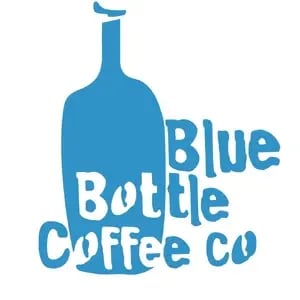Persona Documentation: The Revenue Game-Changer You're Getting Wrong

Unlock the true revenue potential of your marketing efforts with effective persona documentation. This guide reveals common pitfalls and offers actionable steps to transform your strategy.
The Revenue Reality Check
Picture this:
You've invested countless hours creating beautiful buyer personas, complete with stock photos, witty names like 'Marketing Mary' and 'Developer Dave,' and detailed demographic information. Yet your conversion rates remain stubbornly flat, your content still feels generic, and your sales team continues to struggle with lead qualification. Sound familiar?
If you're nodding along, you're not alone. Despite the overwhelming evidence that buyer personas drive revenue growth, most marketers are documenting them incorrectly—focusing on the wrong information and missing the insights that actually move the needle. The stakes couldn't be higher. Companies that exceed their revenue and lead generation goals are 71% more likely to have documented buyer personas compared to those who meet goals (37%) and those who miss them entirely (26%). Even more compelling: businesses using buyer personas see a 171% increase in marketing-generated revenue, while persona-driven email campaigns deliver 18 times more revenue than broadcast emails.
The Documentation Problem: Common Pitfalls
Mistake #1: Describing the Buyer Instead of the Buying Decision. The most pervasive error in persona documentation is focusing on who your buyers are rather than how they buy. Traditional personas read like dating profiles: 'Sarah is a 32-year-old marketing manager who lives in Portland, drives a Prius, and loves craft beer.' While this might help you pick a stock photo, it does nothing to inform your marketing strategy.
Mistake #2: Making Assumptions Instead of Gathering Data. Many teams create personas by filling in gaps with educated guesses or relying on anecdotal evidence from a few vocal customers. This approach is particularly damaging because assumptions often reflect internal biases rather than market reality.
Mistake #3: Creating Too Many Personas. Enthusiasm often leads to over-segmentation. Teams create dozens of personas, thinking more equals better. In reality, having too many personas dilutes focus and makes it impossible to create targeted campaigns.
Mistake #4: Treating Personas as One-Time Projects. Markets evolve, products change, and customer priorities shift. Static personas become outdated quickly, leading to misaligned messaging and missed opportunities.
The Revenue-Driven Documentation Framework
Section 1: Priority Initiatives. Document the 3-5 problems or objectives that drive your persona to invest time, budget, and political capital. These aren't just pain points—they're the strategic initiatives that make solving this problem a priority.
Section 2: Success Factors. Capture the tangible and intangible metrics your persona associates with success. What does winning look like from their perspective?
Section 3: Perceived Barriers. Document the concerns that cause buyers to hesitate or choose alternatives. This section directly informs objection handling and competitive positioning.
Section 4: Buyer's Journey and Decision Criteria. Map who influences decisions at each stage and what criteria matter most. Remember: 67% of sales reps say access to buyer intent data significantly improves their ability to close deals.
Section 5: Information Sources and Preferred Channels. Document where your persona goes for information and how they prefer to consume content. This directly impacts content strategy and channel investment decisions.
Implementing Effective Persona Documentation
Step 1:
Conduct Real Customer Interviews. The foundation of effective persona documentation is primary research. Schedule 30-minute interviews with recent buyers—both those who chose you and those who didn't. Ask them to walk through their decision process from the moment they identified the problem.
Step 2:
Create Collaborative Documentation. Involve your sales, customer success, and product teams in persona development. They have frontline insights that marketing teams often miss. Use collaborative tools that allow multiple stakeholders to contribute and update information.
Step 3:
Make Personas Actionable. Transform your documentation into practical tools: Content calendars mapped to buyer journey stages, sales scripts addressing specific barriers and objections, campaign messaging focused on priority initiatives and success factors, lead scoring criteria based on persona characteristics.
Step 4:
Measure and Iterate. Track metrics that matter: Email engagement, content performance, sales efficiency.
Measuring Success: Revenue Metrics That Matter
- Short-term Metrics (0-3 months):
Email open rates should increase by 111% with proper persona targeting, content engagement should see a 100% increase in page visits, and lead quality scores should show more qualified leads entering your pipeline. - Medium-term Metrics (3-6 months):
Conversion rates should improve by 10%, sales cycle length should see a 72% reduction in lead conversion time, and campaign ROI should show a 171% increase in marketing-generated revenue. - Long-term Metrics (6+ months):
Customer lifetime value often increases, market share growth is more efficient, and overall revenue growth should see a 175% increase attributed to marketing efforts.
Getting Started: Your 30-Day Action Plan
- [Week 1] Audit Your Current State.
Review existing persona documentation, identify gaps in decision-focused information, and survey your sales team about buyer behaviors. - [Week 2] Conduct Customer Interviews.
Schedule 5-10 interviews with recent buyers, focus on decision processes, not demographics, and document triggers, criteria, and barriers. - [Week 3] Create New Documentation.
Use the revenue-driven framework outlined above, involve cross-functional team members, and focus on actionable insights, not descriptive details. - [Week 4] Implement and Test.
Create persona-specific email campaigns, develop targeted content for top priorities, and train your sales team on new insights.
Share this
You May Also Like
These Related Stories
Persona Marketing with Jobs To Be Done - McDonald's Milkshake Case

Unleashing the Power of Brand Storytelling: Elevate Your Marketing with the Seven Basic Plots



No Comments Yet
Let us know what you think